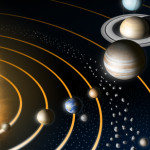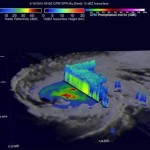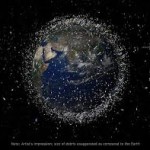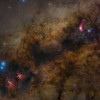posted by NASA by Max Gleber, from NASA’s Goddard Space Flight Center
“(…) NASA uses an arsenal of instruments to learn more about how these storms progress as they form. These devices orbit Earth on a fleet of spacecraft, including Aqua, Terra, the Global Precipitation Measurement core observatory, NASA-NOAA’s Suomi NPP satellite,Calipso, Jason-2 and CloudSat.
“There are typically multiple instruments on every spacecraft with various purposes that often complement each other,” said Eric Moyer, the Earth science operations manager at NASA’s Goddard Space Flight Center in Greenbelt, Maryland. “We can see the progression of a storm from one day to the next using the Terra and Aqua satellites—a morning and afternoon view of every storm system, every day.”
(…) NASA’s RapidScat instrument that flies aboard the International Space Station measures surface winds over the ocean and is used to gather data on tropical cyclones. (…)
Passive microwave imagers aboard NASA’s Global Precipitation Measurement and NASA-NOAA’s Suomi National Polar-orbiting Partnership missions can peer through cloud canopies, allowing scientists to observe where the water is churning in the clouds.
(…) Computer modeling is another powerful NASA research tool.
NASA’s Global Modeling and Assimilation Office, or GMAO works to improve the understanding of hurricanes and assess models and procedures for quality. (…)
NASA also conducts field missions to study hurricanes. (…) The most recent NASA field mission to study hurricanes was the Hurricane and Severe Storm Sentinel or HS3. For three consecutive years, the HS3 mission investigated the processes that underlie hurricane formation and intensity change in the Atlantic Ocean basin. The mission used the Global Hawk, a high-altitude long-endurance aircraft capable of flights of 26 hours at altitudes above 55,000 ft. (…)
In 2016, NASA is launching the Cyclone Global Navigation Satellite System, a constellation of eight small satellites.CYGNSS will probe the inner core of hurricanes in such detail to better understand their rapid intensification. One advantage of CYGNSS is that it can get frequent measurements within storms. (…)
For more on NASA’s hurricane observations and research, visit:
www.nasa.gov/hurricane”
See full original post












